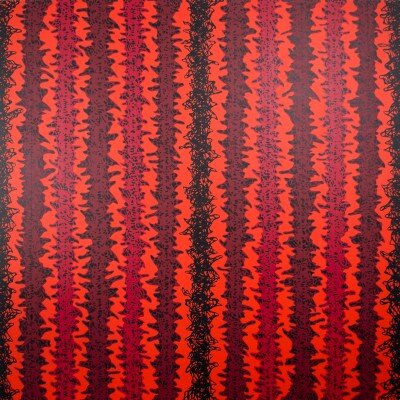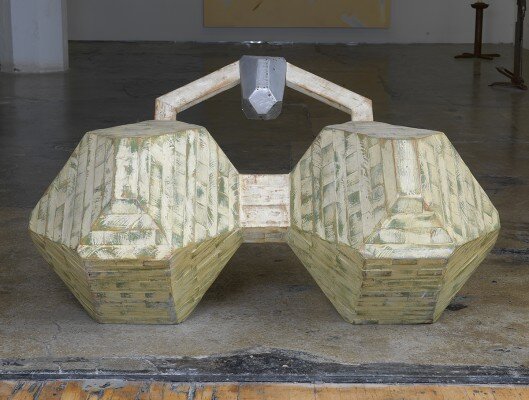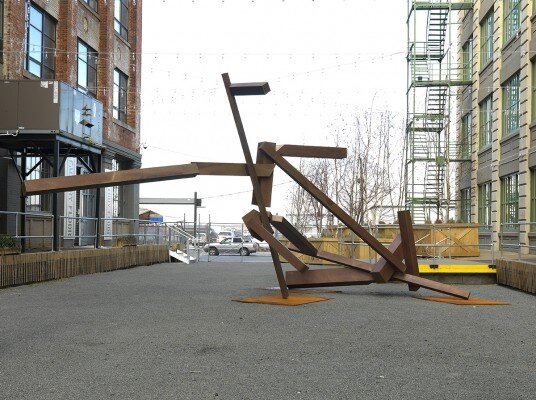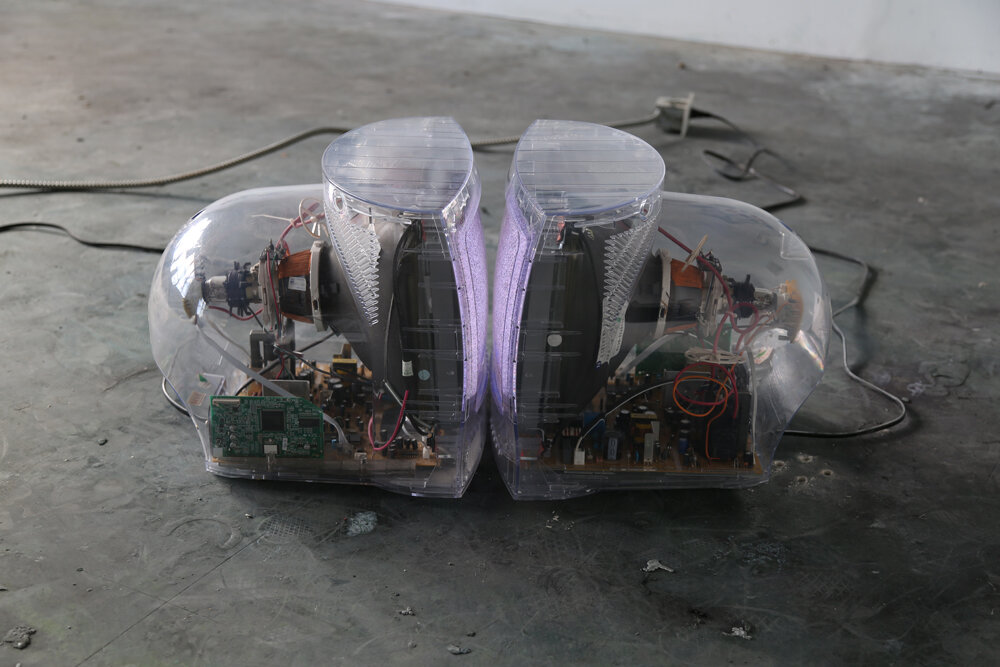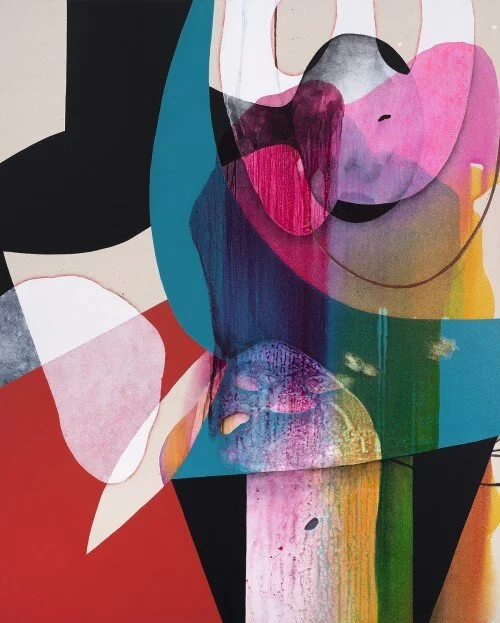
Come Together: Surviving Sandy
Industry City, Brooklyn
October 17- Dec. 15, 2013
To commemorate the one year anniversary of Hurricane Sandy—and the resiliency of New York City’s arts community, which was hit especially hard by the storm—the Dedalus Foundation, the Brooklyn Rail, and the Jamestown Charitable Foundation join with Industry City Associates to present a nearly 100,000 square foot exhibition entitled Come Together: Surviving Sandy, Year 1. The exhibition will take place at Industry City, a hub of creative manufacturing and innovation in Sunset Park, Brooklyn. Centered on the work of artists directly affected by Sandy, the exhibition will also feature work inspired by and referring to the storm, along with work by artists who were invited to participate in the spirit of solidarity.
This site is a complement to the exhibition catalogue Come Together: Surviving Sandy, Year 1, published by Skira in the fall of 2014. As in the printed catalogue, the illustrations consist mostly of installation photographs of works of art that were in the exhibition, along with photographs of the various events that took place while it was on view. Taken together, they are meant to evoke the breadth and energy of this historic event.
Whereas the printed catalogue contained general essays about the exhibition, this website focuses in detail on the work of individual artists in the exhibition. Many of the authors were the curatorial assistants for the exhibition and therefore have an intimate understanding of the works they are writing about.
This exhibition, which was on view from October 17th to December 15th, 2013, had its origins in a disaster of extraordinary proportions. The Atlantic storm named Sandy struck the northeastern United States in October 2012 and came to be known as “Superstorm Sandy.” One of the most destructive storms in United States history, Sandy caused hundreds of lives to be lost, and resulted in property damage estimated at around $70 billion.
The full force of the storm hit New York City on the night of October 29. The timing and circumstances could not have been worse: the storm struck at high tide and during a full moon, which greatly magnified its effects. Surge levels in New York Harbor were almost fourteen feet higher than normal that night, and individual waves measured as high as thirty-two feet. In the wake of the storm, millions of people remained without electric power or were forced to leave their homes; major bridges and tunnels were closed; subways were flooded and railroads suspended service; and downtown hospitals had to evacuate their patients. Such conditions lasted for days in much of the city, and in some areas for weeks, even months; a number of neighborhoods are still recovering.
New York’s artist community was especially hard hit. Many artists had studios in low-lying areas in Brooklyn, Manhattan, and Queens, which were flooded or lost power for extended periods of time. A number of art galleries and storage facilities were also damaged. In several instances, artists lost much of their life’s work.
The storm was devastating, but the response to the devastation generated an enhanced sense of community. On the most direct and personal level, the friends and colleagues of individual artists came to help them clean up and try to salvage works and materials; and those friends were often joined by their friends, and even by strangers, which created a radiating network of assistance. Another important source of help came from a number of foundations and government agencies that provided financial aid to artists, and in some cases found them temporary studio spaces.
Many professional conservators pitched in by donating their time and skills to help save damaged works. One of the most pressing, time-sensitive issues that follows in the wake of any kind of water damage is mold. In order to combat this, especially in works on paper, it was necessary to secure spaces for the volunteer conservators to work in that were large enough to allow air to circulate freely, so that the water-saturated works could dry properly. Especially significant efforts were made by members of the American Institute for Conservation Collections Emergency Response Team and by the Craft Emergency Relief Fund (CERF+), who quickly secured space in which to intervene with the greatest urgency. Industry City donated 18,000 square feet of space in which the conservators could do their salvage work.
That same fall, shortly before the storm, the Dedalus Foundation, which was established by the artist Robert Motherwell (1915–1991), had been in contact with Industry City about moving some of its activities there and about making Industry City the hub of its educational and curatorial programs. The buildings there, which were designed by the industrial architect William Higginson at the turn of the last century, contain large high-ceilinged spaces that are full of light and air. Our plan was to start with an exhibition in June 2013 of works by the winners of scholarships that Dedalus gives to graduating seniors in New York City public high schools, and to follow up with a larger, more general exhibition a few months later, during the following fall.
Given the enormous effect that Sandy had on so many New York artists, and the admirable pluck that the artistic community had shown in the face of the adversity created by the storm, we decided to devote our first large exhibition at Industry City to a commemoration of the first anniversary of Hurricane Sandy—a kind of coming together of artists who work in different mediums, which would emphasize the courage and resiliency of the New York art community.
In order to make such an undertaking succeed, we realized that we would need a gifted and well-connected curator who was close to the pulse of contemporary art. At the suggestion of Dedalus board member John Elderfield, I asked the artist and writer Phong Bui, who is also the publisher of the Brooklyn Rail, if he would be interested in curating such a show. Phong, who had lost the greater part of his own artistic production to the storm, was enthusiastic about the idea, and that July we went out to Industry City together to look at the potential space. Initially, the show was to have been confined to a gallery space of around 15,000 square feet located in the flagship building of the complex. But Phong, who was determined to include as broad a spectrum of artists as was possible, asked about another space that he thought might be available on the third floor of the same building; this was the space where the exhibition of the high school scholarship winners had recently been held. As we walked through that space, and through the beautiful, high-ceilinged space adjacent to it, Phong began to envision an exhibition that would run through several large areas of the building. His enthusiasm became contagious. Within a short time, the management at Industry City offered to make available some 65,000 square feet of space on the first, third, and sixth floors of the building, along with an adjoining 35,000-square-foot courtyard, for large-scale sculptures. What had started out as a relatively modest proposal quickly turned into plans for one of the largest independent art exhibitions ever mounted in New York City.
I should clarify what I mean when I say that these spaces were made “available.” All of these spaces were empty and quite raw, so in promising them for the exhibition, Industry City undertook—at its own expense—an enormous construction project. This included the refinishing of floors, the building of temporary walls, installing lighting, and even activating automatic elevators expressly for the show. As the construction crews began the build-out, Phong and his team of curatorial assistants began to contact artists, make studio visits, and build scale-models of the exhibition spaces. This was an exciting time, and it became even more so when we announced an opening date of October 17, which put everyone under an extremely tight deadline. As the pace of organizing the show picked up, it was hard to say which was more impressive: the extraordinarily speedy construction of the gallery spaces by the Industry City crews or the extraordinary speed and intensity with which Phong and his team of curatorial assistants put the show together.
The way Phong worked with his team of a dozen young curatorial assistants added a significant dimension to the educational aspect of the exhibition. Right from the beginning, the Dedalus Foundation wanted the exhibition to have a strong educational component, in line with its goal of informing the public about modern art and modernism. To this end, we planned a number of educational activities, such as visits by school groups and programs about the protection and conservation of artworks. The curatorial workshop that Phong in effect conducted as he and his assistants put the show together added yet another dimension to the educational aspect of the show. The curatorial assistants learned important lessons about constantly keeping in mind the overall concept of the show while paying careful attention to small details. This intense learning experience embedded the educational aspect of the exhibition right into the very fabric of its creation. (And several of the curatorial assistants later led gallery tours for children.) Moreover, they got a kind of baptism by fire as they learned how to put together such a vast exhibition in such a short time.
Early on, Phong decided not to confine the exhibition only to artists whose work had been directly damaged by Sandy, but to include other artists who would exhibit in solidarity with their storm-ravaged colleagues. This gave the exhibition a greater breadth and also made it clear that even artists who were not directly hit by Sandy were nonetheless affected. The feeling of openness was further enhanced when Phong asked the artists themselves to suggest other artists whose work they thought should be included. Having friends choose friends echoed the ways in which artists had helped not only their friends, but also the friends of friends, in the immediate aftermath of the storm. And this, too, allowed for greater inclusiveness.
While the exhibition was taking shape, we also began to work on a number of programs that would run throughout the duration of the show. These were organized largely by Katy Rogers, Programs Director of the Dedalus Foundation, and Sara Christoph, Managing Director of the Brooklyn Rail. The impulse behind these programs was to emphasize the coming together of all the artistic communities of New York. So in addition to putting on display the works by visual artists, we also invited choreographers, dancers, musicians, poets, and writers to participate. This resulted in a number of splendid dance performances, curated expressly for the exhibition spaces, which made those spaces come alive in exciting and dynamic ways. One wonderfully idiosyncratic event was a whole afternoon and evening of musical performances by visual artists whose works were in the show. A number of poets read works that we commissioned, on themes of disaster; and a panel of writers discussed their own treatments of themes that touched on historical disasters. There were also programs related to how artists could protect and, when necessary, conserve or restore works of art. In addition to panel discussions between artists, curators, and conservators, Lauren Shadford Breismeister, the Executive Director of the United States section of the International Network for the Conservation of Contemporary Art (INCCA-NA), organized a series of videotaped oral history interviews that took place every Saturday during the run of the exhibition, in which artists whose works and studios were damaged by Sandy spoke at length with conservators from a number of different museums and universities.
As the viewer will see, this exhibition had an enormous range. It included artists working in many different styles, and in a broad range of mediums that included painting, sculpture, photography, video, film, and installation art. It also mixed together, often side by side, works by well-known artists, such as Chuck Close, Alex Katz, Nari Ward, Rona Pondick, Richard Serra, and Kiki Smith, with works by artists who were less well-known, and in some cases hardly known at all. Further, it brought together artists of many different ages: the youngest of the more than 325 artists in the show was in his early twenties, the oldest in his early nineties.
In this website, as in the book, we have tried to convey the way the show was installed by illustrating most of the works as they appeared in it, often with some of the surrounding floor or walls visible. The installation, with works by such a wide variety of artists sharing the same large industrial spaces, was electrifying. It conveyed the sense that here, at last, was a real, unfiltered cross-section of the dynamism and variety of the actual New York art world. This was remarked by many visitors to the show, and eloquently expressed by Roberta Smith in her review of the exhibition for the New York Times, where she noted that the exhibition was “an affirmation of New York’s cultural vitality through a wide sampling of artists,” and asserted that “this egalitarian show makes palpable the greatness of New York’s real art world.”1
The exhibition was very well received. Large numbers of people came to see it, including the directors and curators of many museums, and it was widely praised in the press. New York magazine even listed it first among the best art exhibitions in New York during 2013! All of this gave us great pleasure. But an even greater source of pleasure came from the way in which the exhibition brought together so many different constituencies: not only artists, dancers, musicians, poets, museum people, and writers; but also school children who became involved in spirited discussions; people from the local neighborhood, who were stimulated by having such an event held right near their own front doors; college students, who came both individually and along with classes that were studying modern art; and citizens, by which I mean people who had no professional relationship to the arts, but who wanted to see and partake in the energy of contemporary art in an informal and welcoming setting.
For the Dedalus Foundation, this sense of community is especially important. Our founder, Robert Motherwell, who coined the term “New York School” back in 1950, would have been very proud of this exhibition, which brought together the artists of New York in such a dynamic and impressive way. Motherwell was deeply involved in art education, and was a great advocate for solidarity in the community of artists; indeed he was a great proselytizer for modern art at a time when visual artists—and American modernists in particular—were not nearly as widely accepted as they are now.
This website, like the exhibition on which it is based, presents a cross-section of some of the most exciting work produced in contemporary art over the last decade, by artists whose careers have spanned the last half-century. It is a testament to the courage and resiliency of the community of artists in all mediums, and, in the very fullest sense, a coming together.
Roberta Smith, “Art, a Balm After the Storm,” New York Times, December 7, 2013, pp. C1, C7.



















